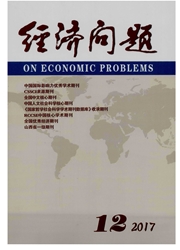

 中文摘要:
中文摘要:
2008年金融危机之后的全球经济萎靡不振,但金砖国家却在以超过全球平均水平的速度发展,其表现让世界为之瞩目,对金融发展与经济增长之间关系的研究也成为学术界所关注的焦点。利用1981-2015年的数据为样本,通过构建面板门槛回归模型分析并验证了金砖国家金融发展与经济增长之间的影响机制。金砖国家金融发展对经济增长不仅存在正向的促进作用,同时在银行间信贷市场和股票市场中存在门槛效应。因此,推行促进金融业发展的政策,进一步完善银行间信贷市场,加强对股票市场的监督与管理可以帮助金砖国家突破金融发展的门槛,有利于推动经济的持续增长。
 英文摘要:
英文摘要:
After the financial crisis in 2008,the global economy was flagging,but the BRICs were developing at a faster pace than the global average,the study of financial development and economic growth shows that there is a nonlinear threshold between them. Data from 1981 to 2015 are used as samples,the construction of the BRICspanel threshold of financial development and economic growth regression model to test the threshold effect,the empirical results support the mechanism of the effect of financial development on economic growth threshold. The BRICs financial development plays a positive role in promoting economic growth,the threshold effect exists between the bank credit market and the stock market,therefore,BRICscan promote the development of the financial industry policy,inorder to improve the inter-bank credit market,strengthen the supervision and management of the stock market,those can help the BRICs countries break the threshold,conducive to sustained promote economic growth.
 同期刊论文项目
同期刊论文项目
 同项目期刊论文
同项目期刊论文
 期刊信息
期刊信息
